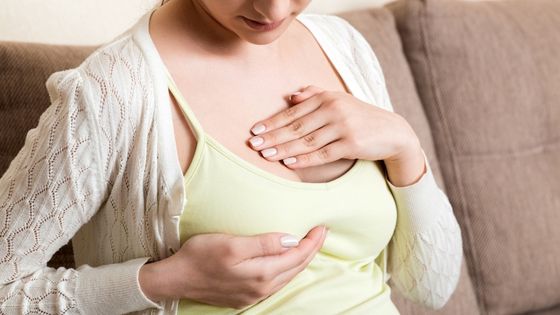I have a pimple-like bump on my breast that hurts. What should I do?

I have a pimple-like bump on my breast that hurts. What should I do? You should visit your gynecologist if you have a suspicious bump on your breast that hurts.
Although it is most likely a pimple or cyst, it is essential to rule out breast cancer. A simple mammogram can usually tell the difference.
- If you have a pimple-like bump that hurts, don't panic!
- Make an appointment with your gynecologist
- Rule out breast cancer with a mammogram
- Cyst treatment
- Breast cancer is a severe disease, but early detection increases the chances of survival
- Spread the word and help others learn about the importance of early detection
- The bottom line
If you have a pimple-like bump that hurts, don't panic!
If you have a pimple-like bump on your breast that hurts, don't panic! It's likely just a benign breast cyst.
Breast cysts are fluid-filled sacs that can form in the breasts. They are most common in women ages 35 to 50.
Breast cysts can be painful, but they are not harmful. If you have a breast cyst, you may notice that it feels like a hard lump.
It may be tender to the touch and may change in size as your hormone levels fluctuate. If you're concerned about a breast cyst, see your doctor.
They can perform a clinical exam and order an ultrasound to confirm the diagnosis. Treatment is usually unnecessary, but your doctor may recommend draining it with a needle if the cyst is large or painful.
So, if you have a pimple-like bulge on your breast that is causing discomfort, don't be alarmed. It's probably nothing more than a harmless breast cyst.
Make an appointment with your gynecologist
If you have a pimple-like bump on your breast that hurts, make an appointment with your gynecologist.
While the bump may be simply a pimple, it could also signify something more serious, such as breast cancer.
A gynecologist can determine the cause of the bump and provide the appropriate treatment.
In the meantime, avoid picking or squeezing the bumps, as this could cause further irritation or infection.
Rule out breast cancer with a mammogram
If you have a painful breast lump, it's essential to have it evaluated by a doctor (as we said before). While painful breast lumps are usually benign, they can occasionally be a sign of cancer.
A mammogram or a breast X-ray is the best way to rule out breast cancer. Mammograms can usually tell if a lump is solid (which may be cancer) or filled with fluid (which is generally benign).
A biopsy may be needed to confirm the diagnosis if the mammogram shows that the lump is solid.
So, if you have a painful breast lump, talk to your doctor and get a mammogram to rule out cancer.
Cyst treatment
Although most breast lumps are benign, it's essential to have any lump checked out by a doctor.
If the lump is a cyst, your doctor may recommend aspirating it (drawing out the fluid) with a needle. This simple treatment can usually be done in the office and doesn't require any special preparation.
However, if the cyst is large or painful, your doctor may recommend surgery to remove it.
In most cases, cysts do not require any exceptional follow-up after treatment. However, if you have multiple cysts or a history of breast cancer, you may need follow-up scans or tests to ensure that the cysts are not cancerous.
Breast cancer is a severe disease, but early detection increases the chances of survival
Breast cancer is a severe disease that affects many women each year. The good news is that, with early detection, the chances of survival are increased.
There are several ways to detect breast cancer early. First, it is essential to perform self-exams regularly.
That will help you to become familiar with the average size and shape of your breasts so that you can more easily detect changes.
In addition, it is vital to have regular mammograms. Mammograms can detect changes in breast tissue before they can be felt or seen.
As a result, they are a vital tool in the early detection of breast cancer.
If you have any concerns about your breast health, be sure to speak with your doctor. Early detection is key to survival, so don't hesitate to get the information and screenings you need.
Spread the word and help others learn about the importance of early detection
Now that you know more about the importance of early detection spread the word to your friends and family.
Please help them understand breast cancer's signs and symptoms and encourage them to get regular screenings.
Together, we can make a difference in the fight against breast cancer.
The bottom line
If you have a pimple-like bump on your breast that hurts, don't panic! It's probably nothing more than a harmless breast cyst.
However, it's crucial to get the bump checked out by a doctor to be sure. In the meantime, avoid picking or squeezing the bumps, as this could cause further irritation or infection.
DISCLAIMER: buildyourbody.org does not provide medical advice, examination, or diagnosis.
Medically reviewed and approved by Nataniel Josue M D.
